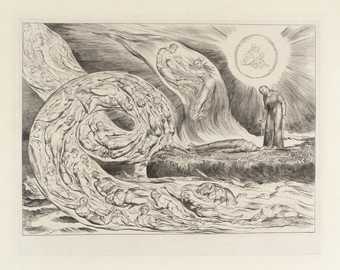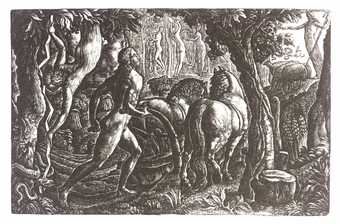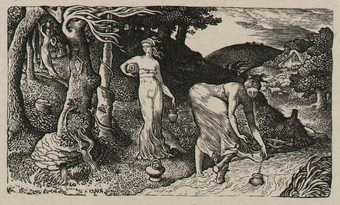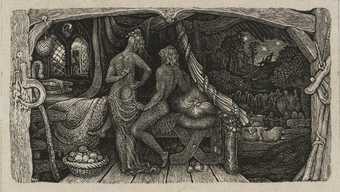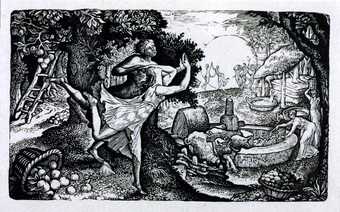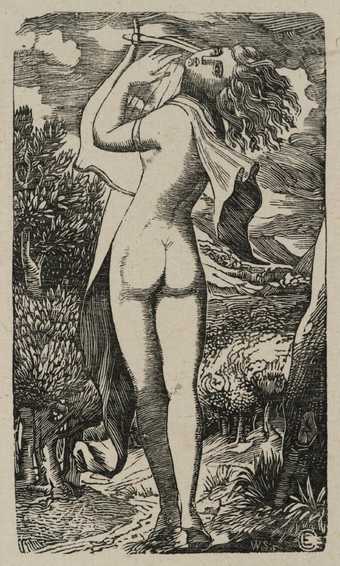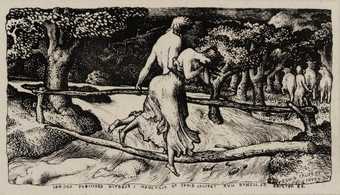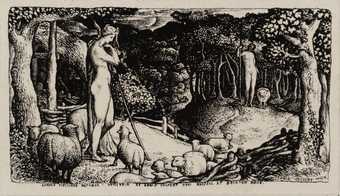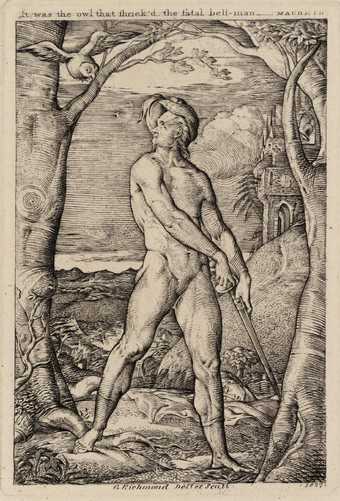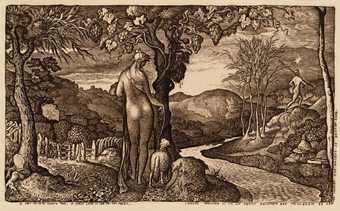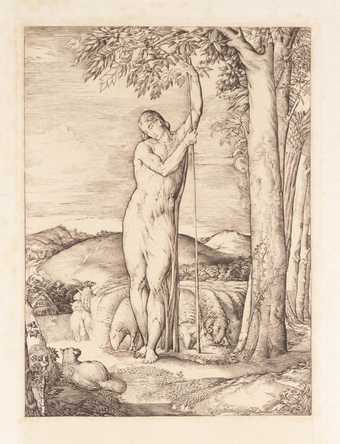
Not on display
- Artist
- Edward Calvert 1799–1883
- Medium
- Line engraving on paper
- Dimensions
- Image: 76 × 127 mm
- Collection
- Tate
- Acquisition
- Presented by S. Calvert 1912
- Reference
- A00157
Display caption
Calvert's landscapes were partly inspired by the countryside around Shoreham. But they also drew on the pastoral vision depicted by Blake in his Virgil woodcuts and on Blake's notion of Beulah. This came from the Biblical Beulah, the name given to Palestine when God restored it to favour, and from John Bunyan's Beulah or Earthly Paradise of The Pilgrim's Progress. Beulah also meant 'married'. The idea of the Soul as the Bride seeking God on the difficult path to salvation lies at the heart of The Bride.
Gallery label, August 2004
Does this text contain inaccurate information or language that you feel we should improve or change? We would like to hear from you.
Explore
- architecture(30,960)
-
- townscapes / man-made features(21,603)
- universal concepts(6,387)
-
- fertility(48)
- fruit, grape(48)
- actions: postures and motions(9,111)
-
- walking(607)
- mythical, religious, fictional(260)
-
- Beulah(2)
- religious(106)
-
- sinner - sheep(3)
- soul - bride(2)
You might like
-
William Blake The Circle of the Lustful: Francesca da Rimini (‘The Whirlwind of Lovers’)
1826–7, reprinted 1892 -
Edward Calvert The Sheep of his Pasture
c.1828 -
Edward Calvert The Ploughman
1827 -
Edward Calvert The Brook
1829 -
Edward Calvert The Chamber Idyll
1831 -
Edward Calvert The Cyder Feast
1828 -
Edward Calvert The Return Home
1830 -
Edward Calvert The Bacchante, engraved by Welby Sherman
c.1825 -
Edward Calvert The Flood
1829 -
Edward Calvert Ideal Pastoral Life
1829 -
George Richmond The Fatal Bellman (‘The Robber’)
1827 -
Edward Calvert The Bride
1828 -
Samuel Palmer Evening, engraved by Welby Sherman
1834 -
George Richmond The Shepherd
1827 -
After Joseph Mallord William Turner Knaresborough, Yorkshire
1828

